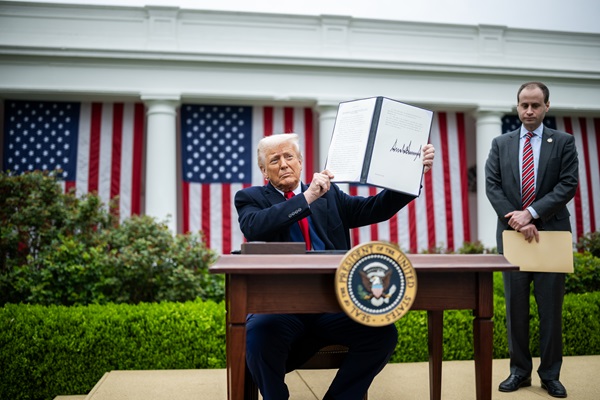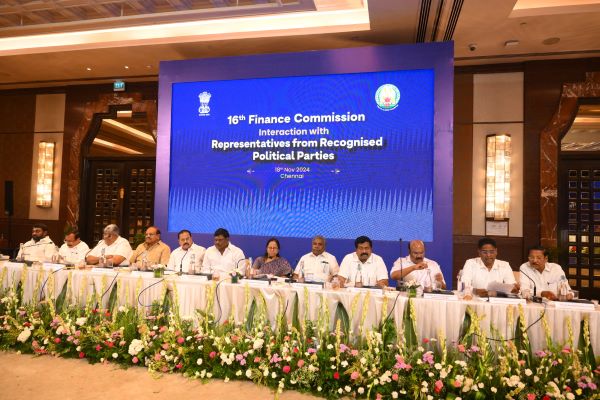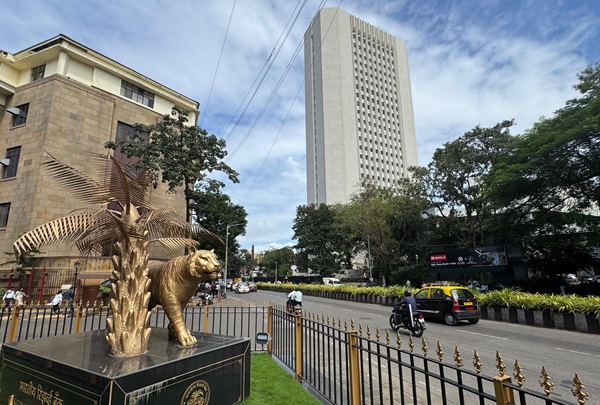.png)
India Likely to Gain from Trump’s Tariff Overhaul
Trump’s new tariffs hit Asia hard—but India escapes the worst. A GTRI explainer shows how this could reboot Indian exports and supply chains.


Ajay Srivastava, founder of Global Trade Research Initiative, is an ex-Indian Trade Service officer with expertise in WTO and FTA negotiations.
April 3, 2025 at 4:20 AM IST
As the United States resets its global trade terms under President Donald Trump’s new tariff policy, India finds itself relatively well-placed to benefit from the fallout. While more than 60 countries face steeper barriers to the world’s largest consumer market, Indian exporters are likely to emerge as second-tier beneficiaries of a global supply chain reordering.
Sweeping Changes
In a dramatic escalation of protectionist trade policy, the US administration announced a two-stage tariff overhaul starting April 2025. From April 5, a universal 10% baseline tariff applies to all imports. This is followed by a sharp shift to country-specific reciprocal tariffs from April 9, calculated based on bilateral trade deficits and strategic interests.
Under the new structure, the US imposes:
- A 25% tariff on strategic sectors—steel, aluminium, automobiles, and auto parts.
- Zero tariffs on essential goods like pharmaceuticals, semiconductors, copper, and energy products.
- A tiered reciprocal tariff structure on all other goods, replacing the flat 10% duty starting April 9.
Products with at least 20% US value-added content are taxed only on the non-US portion. The existing $800 de minimis exemption for low-value imports remains temporarily in place, but is expected to be phased out once new collection systems are in place.
India’s tariff exposure: moderate and manageable
For Indian exporters, the tariff landscape under the new regime is mixed but manageable:
- 25% tariffs apply to Indian exports of steel, aluminium, and auto-related goods.
- Zero tariffs are maintained for Indian exports of pharmaceuticals, semiconductors, copper, and energy products.
- For the rest of the export basket, a reciprocal tariff of 27% takes effect on April 9, replacing the flat 10% rate.
This puts India in a stronger position compared to several East and Southeast Asian countries. China faces total tariffs of up to 54% on non-exempt goods, Vietnam 46%, and Taiwan 32%. Even regional rivals like Thailand and Bangladesh are hit with rates of 36% and 37%, respectively.
Opportunities for India
The tariff divergence creates space for Indian industries to expand their footprint in the U.S. market, particularly in sectors where traditional Asian leaders are penalised.
- Textiles and garments: Higher tariffs on Chinese and Bangladeshi apparel increase the appeal of Indian alternatives. India’s large-scale production base and existing export relationships could see a revival of US-bound orders.
- Electronics and telecom: Vietnam and Thailand’s loss may be India’s gain. Steep tariffs on their exports enhance India’s competitiveness, especially with ongoing support through Production-Linked Incentive (PLI) schemes in electronics manufacturing and smartphone assembly.
- Semiconductors and components: While India lags in high-end fabrication, it can capitalise on packaging, assembly, and testing as Taiwanese firms seek partial relocation. Lower Indian tariffs and policy incentives may accelerate value chain migration.
- Machinery, toys, and automotive parts: China and Thailand’s dominance in these categories now faces a cost disadvantage. With investment-friendly policies and rising global demand for diversified sourcing, India could emerge as a viable substitute.
Policy Inconsistencies
The US tariff matrix, while bold, is not without contradictions. Countries with large trade deficits like Ireland ($89.2 billion in 2024) or Romania have escaped new duties. Meanwhile, some low-income economies with marginal deficits, such as Madagascar and Myanmar, face tariffs nearing 50%.
Even US trade surplus partners like Australia and the UAE have been slapped with the baseline 10% tariff. These inconsistencies highlight the geopolitical and supply-chain dimensions underpinning the policy, beyond pure economics.
New Delhi’s challenge: convert advantage into action
India’s window of opportunity is clear, but the onus is on policymakers and businesses to act. If New Delhi can improve the ease of doing business, reduce logistics bottlenecks, and ensure regulatory consistency, it may attract a significant portion of the investment and trade realignment now underway.
However, gains will not accrue automatically. India needs deep reforms for enabling scale production, domestic value addition and improving competiveness to benefit.
While the US aims to reshore jobs and rebalance trade, its tariff regime may inadvertently accelerate India’s rise as a competitive global manufacturing hub. For India, this is not just a tariff reprieve—it’s a geopolitical opening.
Also Read:
What Drives Trump's Madness
Reciprocal Tariffs: Brace For Impact
Trump’s Tariff Shock Revives Mercantilism, Endangers Global Trade
Bilateralism Trumps Multilateralism As US Resets Trade Terms
India’s Muted Response To US Tariffs Contrasts With Global Assertiveness
India Likely to Gain from Trump’s Tariff Overhaul
India Singled Out In Trump’s Escalating Tariff crusade



